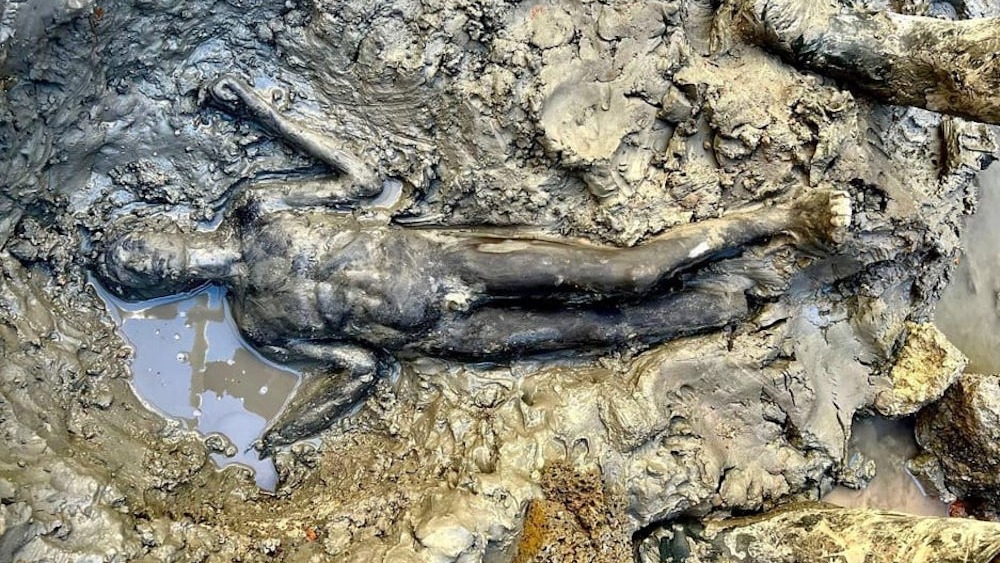Ancient Etruscans prayed at sacred hot springs, stunning statues reveal
Two-dozen ancient bronze sculptures found in Italy "will rewrite history."

Archaeologists in Italy have unearthed more than two dozen 2,000-year-old bronze statues, many of which are impeccably preserved in millennia of mud, alongside thousands of coins left there by Romans and Etruscans, a mysterious people who once ruled parts of the Italian Peninsula and whose language has yet to be deciphered.
Since 2019, archaeologists have been digging in San Casciano dei Bagni, a commune in the central Italian region of Tuscany, and their persistence has paid off. The ancient statues are the largest concentration of bronze statues from that time period ever found in Italy and include pieces that depict Apollo and Hygeia, the ancient Greek god and goddess of health. Some of the statues also contain Etruscan and Latin inscriptions, according to a translated statement. (The Etruscan written language uses the Latin alphabet, but researchers haven't been able to decipher the words.)
In addition to full-body sculptures, archaeologists found bronze carvings of individual body parts and organs, which may have been used as offerings to the gods, alongside 5,000 gold, silver and bronze coins.
"It's a discovery that will rewrite history," Jacopo Tabolli, an archaeologist at the University for Foreigners of Siena who coordinated the dig, said in the statement.
Archaeologists discovered the collection in a thermal spring near the commune, where the mud-caked waters helped preserve the pieces. The artifacts date to the end of the Etruscan civilization, roughly between the middle of the third century B.C. and 90 B.C., when the Roman Empire was expanding.
Related: Scientists solve the mystery of the Etruscans' origins
Although the Romans had battled the Etruscans in the preceding centuries and the Romans eventually conquered the Etruscans and assimilated them into Roman culture, the treasure trove offers insight into how Etruscan and Roman families likely came together at the sacred pools to pray to deities.
Sign up for the Live Science daily newsletter now
Get the world’s most fascinating discoveries delivered straight to your inbox.
"While there were social and civil wars being fought outside the sanctuary ... inside the sanctuary the great elite Etruscan and Roman families prayed together in a context of peace surrounded by conflict," Tabolli said. "This possibility to rewrite the relationship and dialectic between the Etruscans and Romans is an exceptional opportunity."
He added that "even in historical epochs in which the most awful conflicts were raging outside, inside these pools and on these altars the two worlds, the Etruscan and Roman ones, appear to have co-existed without problems," he told ANSA, an Italian news agency.
Based on the importance of these findings, the Italian Ministry of Culture has announced that it will begin construction on a new museum to house the antiquities.
Jennifer Nalewicki is former Live Science staff writer and Salt Lake City-based journalist whose work has been featured in The New York Times, Smithsonian Magazine, Scientific American, Popular Mechanics and more. She covers several science topics from planet Earth to paleontology and archaeology to health and culture. Prior to freelancing, Jennifer held an Editor role at Time Inc. Jennifer has a bachelor's degree in Journalism from The University of Texas at Austin.










